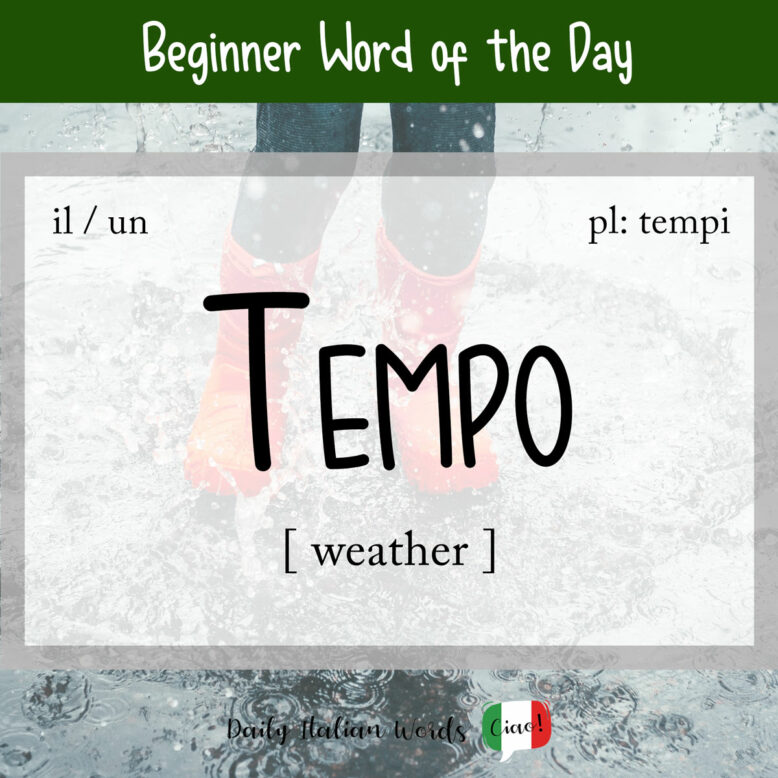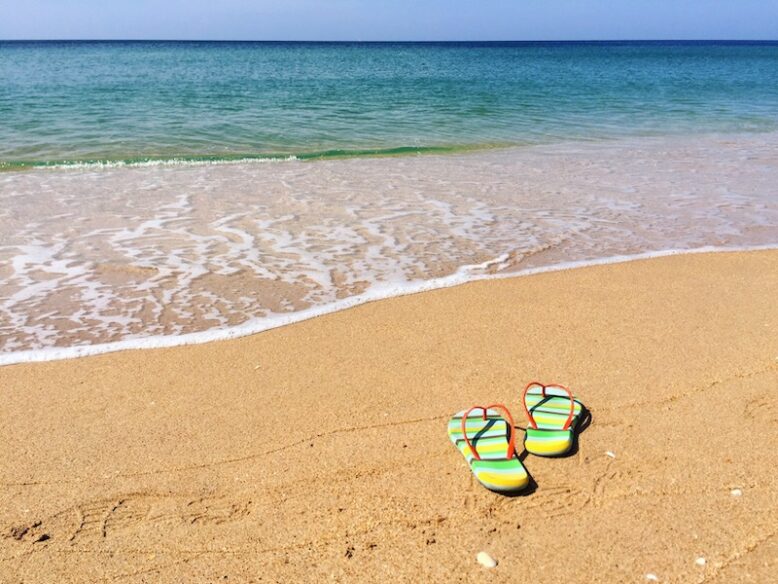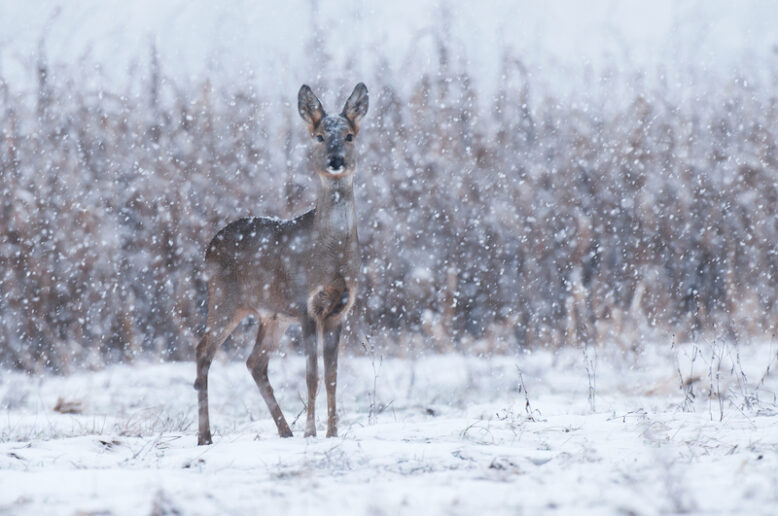The Italian word for weather is tempo (masculine, plural: tempi). It comes from the Latin tempus meaning time – and yes, before you say anything, we are fully aware that tempo is also the word for time in Italian. However, we won’t be covering this definition here, as it deserves a blog post all of its own!

When describing the weather in Italian, you can use various adjectives, including:
- tempo soleggiato = sunny weather
- tempo piovoso / piovigginoso = rainy weather / drizzly weather
- tempo nuvoloso = cloudy weather
- tempo uggioso = gloomy weather
- tempo tempestoso = stormy weather
- bel tempo = nice weather
- tempo caldo = warm weather
- tempo freddo = cold weather
- tempo umido = humid weather
- tempo afoso = muggy weather
- tempo ventoso = windy weather

Interestingly, there is more than one way to describe bad weather in Italian. You can use the adjectives brutto or cattivo, both of which mean bad or unpleasant in this context, or you can use the single words maltempo or tempaccio. The former is formed of the words mal (yet another way of saying bad) and tempo, whereas the latter uses the pejorative suffix -accio.
Quando finirà questo brutto tempo? Non ce la faccio più!
When will this bad weather end? I can’t take it anymore!
The weather forecast is known as either il meteo or le previsioni del tempo (lit: the prediction of the weather).

If you want to ask someone what the weather is like outside, the most common way of posing the question is Che tempo fa? or Com’è il tempo? which translate as How is the weather?
Che tempo fa oggi?
How’s the weather?
Com’è il tempo a Roma?
What’s the weather like in Rome?
Another expression you can encounter is Che tempo c’è? which literally means What (kind of) weather is there?
Trivia: there is a popular Italian talk show called Che tempo che fa, which has been on air since 2003 on the RAI national TV channels. Learners might think that the title refers to the weather whereas in actual fact, it plays on the double meaning of tempo (weather and time).
Originally, the show was based around the national and international weather forecast, and its name was inspired by an older program called Che tempo fa. After a disappointing first season, the authors decided to transform it into a talk show, following the successful recipe of the American Late show.
Consequentially, the meaning of the title expanded to “What the (current) times are like” because the show covers all sorts of current events (politics, art, sports etc.) with Italian and foreign guests. There is still a much smaller part dedicated to the weather forecast.

Let’s take a look at a few popular ways of responding to these questions. Be aware that Italians construct weather-related sentences with the verb fare more than with essere (to be) + adjective or c’è / ci sono (there is / there are).
- Fa brutto. = It’s bad.
- Fa freddo. = It’s cold.
- Fa freddissimo. = It’s freezing.
- Fa fresco. = It’s cool.
- C’è afa. = It’s muggy.
- C’è nebbia. = It’s foggy.
Com’è il tempo giù da voi? – Fa caldissimo! Ci sono quasi quaranta gradi!
How’s the weather where you are? – It’s hot! It’s almost 40 degrees!
Sometimes Italians prefer to use verbs instead of adjectives to describe the state of the weather, especially when talking about precipitation. For example:
- Piove. / Sta piovendo. = It’s raining.
- Diluvia. / Sta diluviando. = It’s pouring.
- Si gela. = It’s freezing. (lit: One freezes)
- Grandina. / Sta grandinando. = Hail is falling.
- Nevica. / Sta nevicando. = It’s snowing.
- Si sta schiarendo. = It’s clearing up.
Che tempo fa in montagna? – Sta nevicando.
How is the weather in the mountains? – It’s snowing.

A synonym of tempo you’ll find in dictionaries is clima which translates as climate. For example, cambiamento climatico is climate change. As in English, clima doesn’t mean exactly the same thing as tempo. It refers to the average weather conditions of a location over a long period of time (often 30 years).
Weather idioms in Italian featuring ‘tempo’
Fare il bello e il cattivo tempo / Fare la pioggia e il bel tempo
Literal translation: to be good and bad weather / to make rain and good weather
English meaning: to have the authority to make decisions and force others to follow them
Lasciare il tempo che si trova
Literal translation: To leave the weather as it was found
English meaning: something that has no effect, makes no difference to a situation, or doesn’t change anything
Un tempo da lupi / da cani
Literal translation: weather of the wolves / the dogs
English meaning: awful weather
Heather Broster is a graduate with honours in linguistics from the University of Western Ontario. She is an aspiring polyglot, proficient in English and Italian, as well as Japanese, Welsh, and French to varying degrees of fluency. Originally from Toronto, Heather has resided in various countries, notably Italy for a period of six years. Her primary focus lies in the fields of language acquisition, education, and bilingual instruction.


